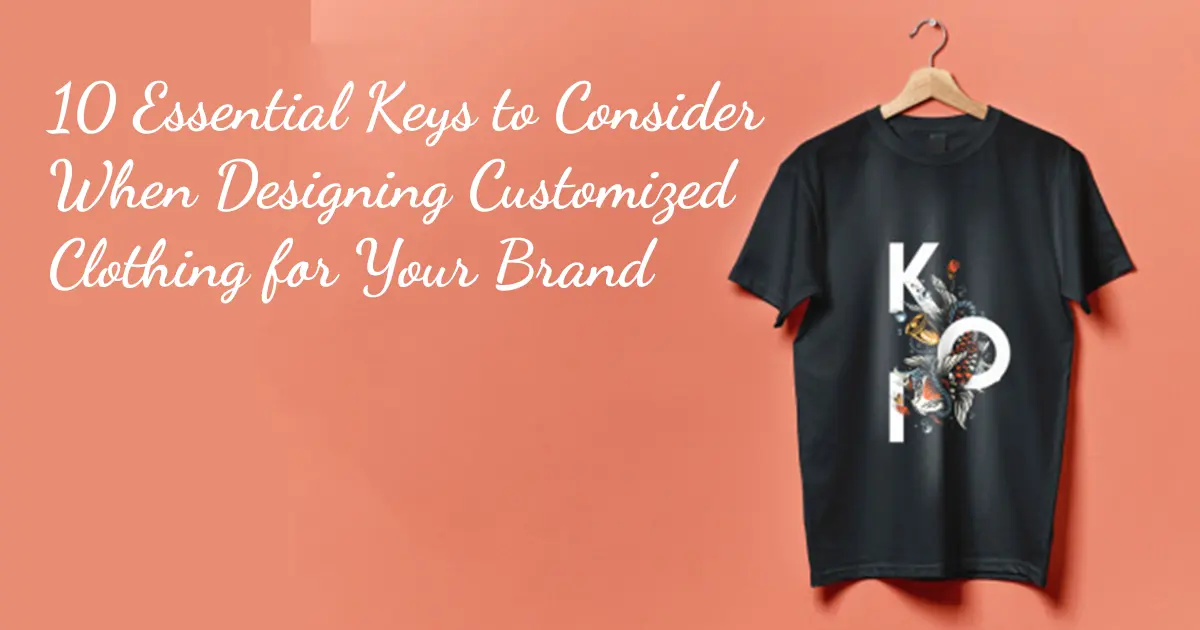Custom clothing serves as a powerful medium for a brand to express its identity, values, and uniqueness. The journey from conceptualization to the final stitch is a nuanced process that demands careful consideration of various factors. Let’s delve into the essential considerations when designing custom clothing for your business in intricate detail.
1. Define Your Brand Identity:
Before the design process begins, a clear understanding of your brand’s identity is paramount. This involves delving into the brand’s ethos, core values, and the emotions you aim to evoke. What story does your brand want to tell? This foundational clarity ensures that every design decision aligns seamlessly with your brand’s personality.
2. Understand Your Audience:
Your audience is not just a statistic but a dynamic group with specific preferences and lifestyles. Conduct thorough market research to understand demographics, psychographics, and cultural nuances. What are their daily lives like, and what resonates with them? This understanding guides the design process, ensuring that the custom clothing appeals directly to the target market.
3. Quality Fabric Selection:
The choice of fabric is the bedrock of any custom clothing line. Each fabric has its unique characteristics, influencing the look, feel, and functionality of the garment. Consider factors such as texture, weight, and breathability. Whether it’s the soft touch of organic cotton for casual wear, the luxurious feel of silk for upscale attire, or the rugged durability of denim for workwear, the fabric must align not only with your brand’s aesthetic but also with the intended purpose of the clothing.
4. Balance Functionality and Fashion:
While aesthetics are crucial, functionality is equally significant, particularly for custom clothing designed for specific purposes. Workwear, athletic wear, or outdoor gear must seamlessly blend style with practicality. Consider factors like moisture-wicking capabilities, breathability, and durability based on the intended use of the clothing. This ensures that the custom pieces not only look good but also perform well.
5. Versatility in Design:
Versatility in design adds value to custom clothing, making each piece more appealing to a broader audience. Consider how a design can transition across occasions and seasons. Pieces that can be dressed up or down, or those that seamlessly adapt to different weather conditions, provide more reasons for consumers to invest in your brand.
6. Consistent Branding Elements:
Consistency in branding elements is crucial for building brand recognition. Logos, color schemes, or signature design elements should be cohesive across the entire custom clothing line. This ensures that each piece contributes to a unified image, reinforcing your brand’s identity in the minds of consumers.
7. Customization Options for Consumers:
Empower your customers with a seamless and enjoyable customization process. From monogramming to choosing color combinations or adjusting sizing, offering personalization options fosters a sense of ownership. The customization process should be user-friendly, turning each piece into a unique expression of an individual’s style. Consider providing a variety of options without overwhelming the customer.
8. Consider Sustainable Practices for Clothing:
Sustainability is not just a trend but a crucial consideration in contemporary consumer choices. Explore eco-friendly practices throughout your supply chain, from sourcing materials to production processes. This could include using organic or recycled fabrics, implementing ethical manufacturing practices, and minimizing environmental impact. Communicate your commitment to sustainability transparently, as this can resonate positively with environmentally conscious consumers.
9. Collaborate with Skilled Artisans:
The craftsmanship behind custom clothing is a critical factor in its success. Collaborate with skilled artisans or reputable manufacturers who understand your brand’s vision and values. Quality craftsmanship ensures that the final product not only meets but exceeds expectations. This collaboration contributes not only to the aesthetic appeal but also to the longevity of your brand.
10. Comprehensive Testing and Quality Control:
Before launching a custom clothing line, conduct thorough testing to ensure that each garment meets your brand’s exacting standards. This involves extensive quality control measures to address potential issues before they reach the consumer. Factors such as comfort, fit, and durability must be rigorously tested. Investing in comprehensive testing minimizes the risk of manufacturing flaws, reinforcing the reputation of your brand for delivering consistently high-quality products.
In conclusion, the process of designing custom clothing for a business is a nuanced and multifaceted journey. These considerations form the bedrock, intertwining creativity, identity, and consumer connection. By strategically approaching each aspect with a meticulous eye for detail, you pave the way for a custom clothing line that not only reflects your brand’s essence but also resonates with the diverse tastes of your audience.


